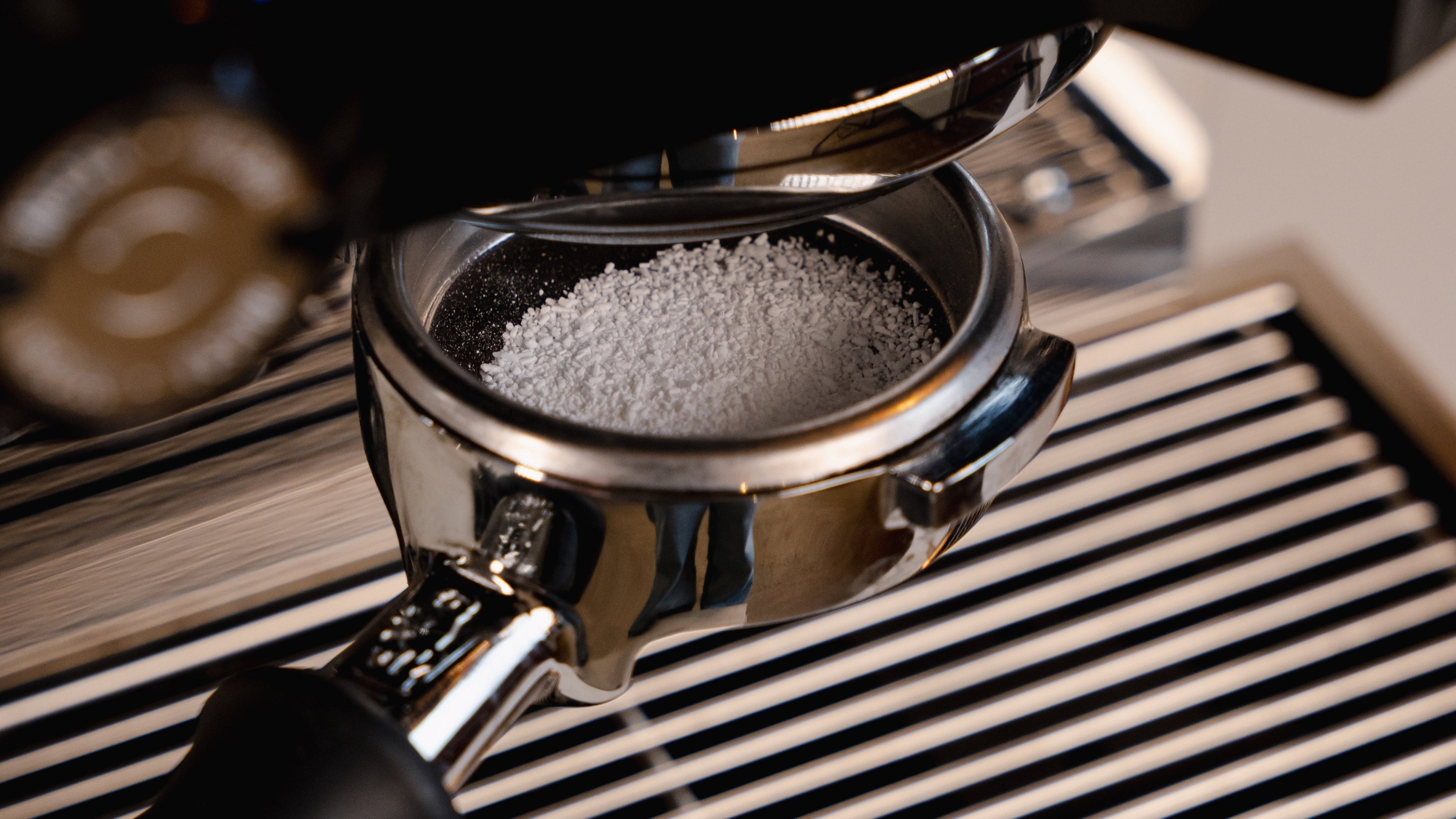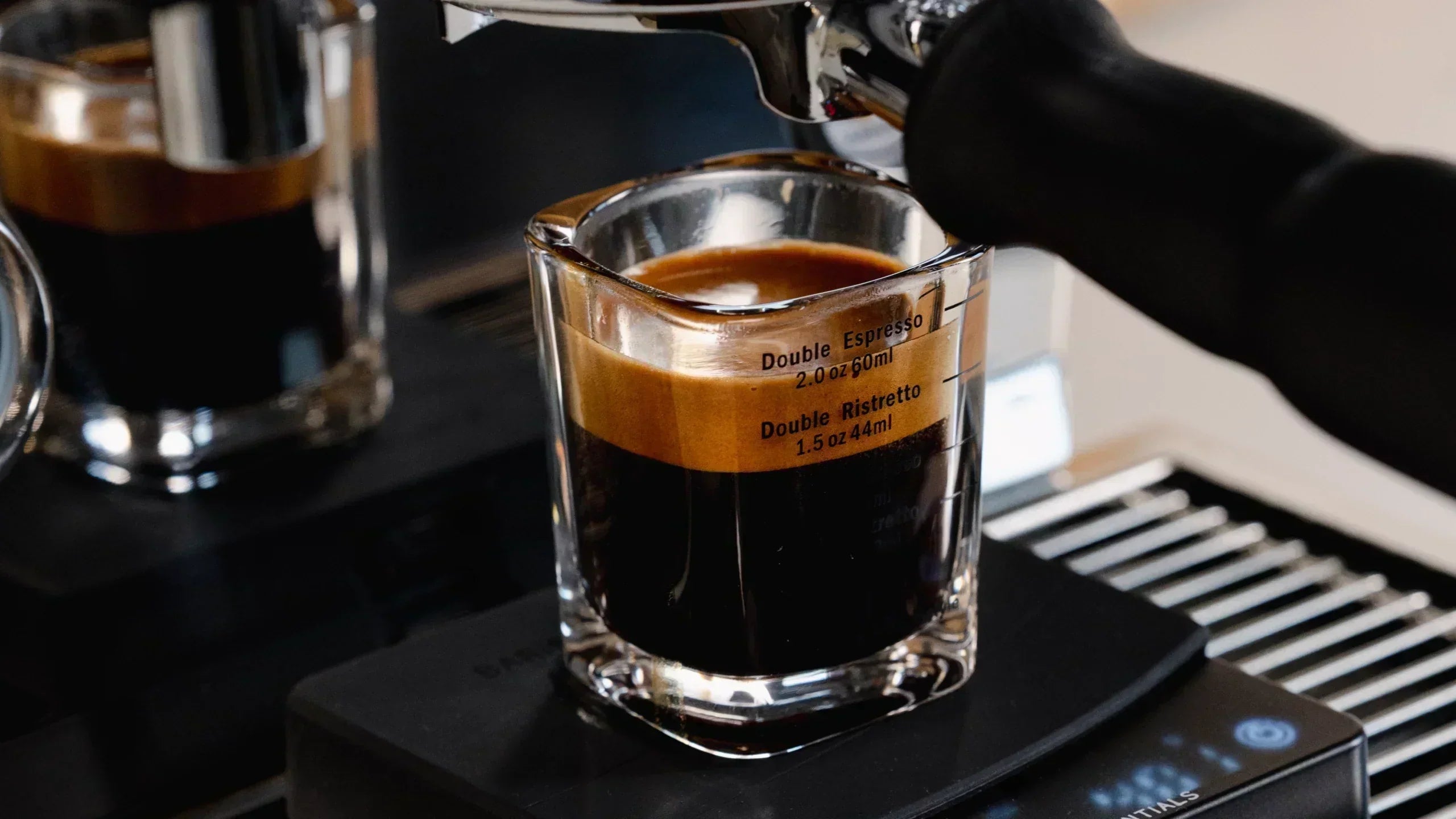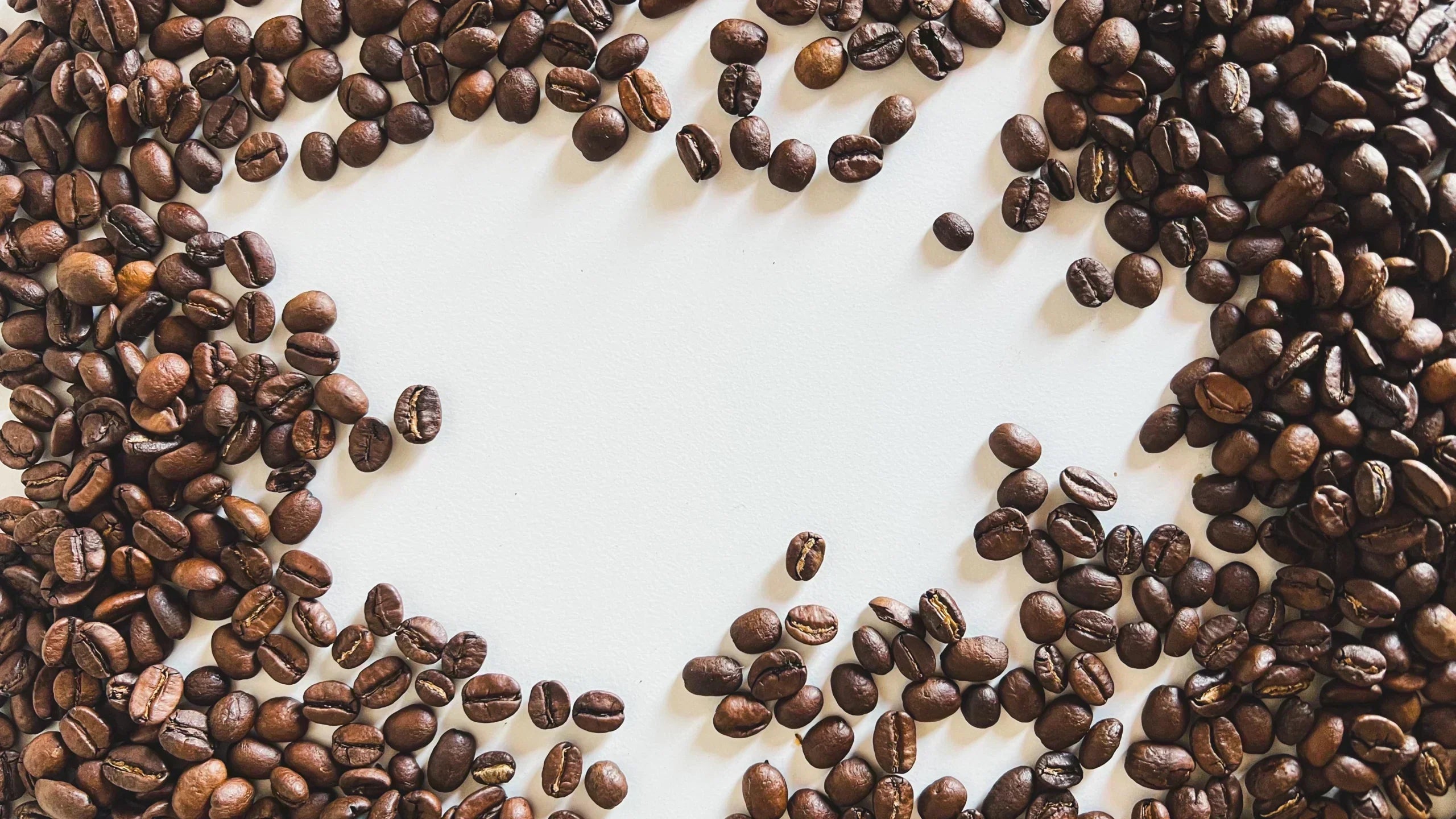You’ve bought a coffee grinder, an espresso machine, or maybe a combination of both (like a Sage or Solis).
Next, you’re faced with all those buttons and sliders to adjust your grinder and espresso machine. So many possibilities, but how do you find the right foundation for a delicious espresso?
In this guide, I’ll explain how to set up your grinder and brew a well-balanced espresso.
1. Essentials
Below, I’ve listed the tools I recommend for setting up your espresso machine and grinder — and for brewing great-tasting coffee.
1.1 Required
- Freshly roasted coffee beans (roasted less than 2 months ago)
- 18g filter basket
- Knock box or knock drawer to dispose of used coffee grounds
- Tamper for pressing the coffee
- Tamper mat to protect your countertop
- Barista scale to weigh your coffee before and after brewing
1.2 Optional
- Coffee distributor for evenly distributing grounds
- Dosing ring to prevent coffee mess and waste
- Milk frothing jug for steaming milk
- Espresso shot glass
2. The Basics
2.1 It All Starts with Espresso
In this guide, I’ll show you how to set up your espresso machine and grinder to brew a delicious double espresso.
But why a double espresso if you prefer other coffee drinks? Because espresso is the foundation for every coffee drink, including:
- Cappuccino: Single espresso with steamed milk
- Americano: Single espresso topped with hot water
- Latte macchiato: Steamed milk in a tall glass with espresso poured over it
- Flat white: Double espresso with steamed milk
2.2 Always Brew a Double Espresso
So why a double espresso if you only want one cup of coffee? It’s because a double espresso provides the correct ratio of ground coffee to brewed espresso.
You’ll be using an 18-gram filter basket, which holds 18 grams of ground coffee and yields about 36 grams of espresso with a brew time of around 25 seconds.
Personally, I sometimes throw away one of the two shots if I don’t want too much caffeine. It might seem wasteful, but a single espresso doesn’t use half the amount of coffee, the difference is actually quite small.
And if you don’t want to waste that extra shot, just ask your neighbor, housemate, or partner if they’d like a coffee too. I’ve made plenty of friends that way, trust me!
3. Grinding the Coffee Beans
First, we’ll make sure you get 18 grams of ground coffee into your portafilter.
Step 1: Turn on your coffee scale.
Step 2: Place your portafilter (optionally with a dosing ring) at an angle on the scale and press tare to reset it to zero.
Step 3: Grind your coffee beans and let the grounds fall directly into your portafilter.
tep 4: Place the portafilter back on the scale in between grinding until you reach a total of 18 grams of coffee.
4. Distributing and Tamping
The next step is to distribute and tamp the ground coffee in your portafilter:
Step 5: Place the portafilter on the tamper mat.
Step 6: Distribute the coffee evenly in the portafilter. You can do this by hand, but for a more professional approach, use a coffee distributor.
Step 7: Tamp the coffee firmly with your tamper to create a compact “puck.” You don’t need to press with your full body weight, but don’t be too gentle either, around 10 to 15 kilograms of pressure is ideal.
5. Brewing Espresso and Adjusting Your Machine
Now it’s time to pull your espresso! Don’t worry if your first shot tastes too weak or too strong — in the next step, adjusting the grind size, we’ll use your results to find the perfect setup for you.
Step 8: Insert the portafilter into your espresso machine and make sure it’s properly locked in place.
Step 9: Place your barista scale on the drip tray of your espresso machine. Then put a barista cup or two espresso shot glasses on top.
Step 10: Press tare to reset the scale to zero.
Step 11: Start your machine and at the same time press start on the scale to begin the timer.
Step 12: Let the espresso flow until you have 36 grams in your cup. Then immediately stop both the machine and the timer. Write down the number of seconds shown on the timer.
6. Adjusting the Grinder
Based on the timing from Step 11, we can now fine-tune your grinder. Here’s how:
Step 13: Did it take longer than 27 seconds to get 36 grams of espresso in your cup, or did barely any water come through the portafilter?
This means the water struggled to flow through the coffee. Your espresso is over-extracted and will likely taste bitter.
→ Adjust your grinder to make the coffee coarser, then repeat all steps from Step 1.
Step 14: Did it take less than 23 seconds to get 36 grams of espresso?
This means the water flowed too easily through the coffee. Your espresso is under-extracted and will taste sour.
→ Adjust your grinder to make the coffee finer, then repeat all steps from Step 1.
Step 15: Did you manage to extract 36 grams of espresso from 18 grams of coffee in around 25 seconds? Then you’ve found the perfect base for a delicious espresso.
Step 16: Quick, your espresso is cooling down! It’s time to steam your milk and turn your espresso into a creamy cappuccino, flat white, or latte macchiato. Or just enjoy it as it is, of course.
7. Cleaning
Keeping your espresso machine clean is just as important as learning to use it properly. Follow these steps:
Step 17: Remove the portafilter from your espresso machine and knock out the wet coffee puck into your knock box.
Step 18: Wipe the inside of the portafilter with a barista cloth.
Step 19: Run a small amount of water through the brew group to rinse away any leftover coffee residue.
Step 20: Use a group head brush to clean around the edges of the brew group and remove any remaining coffee grounds.




